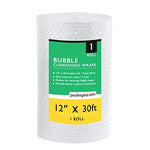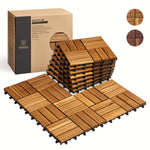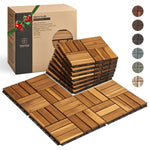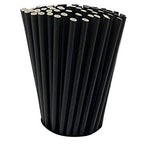You have no items in your shopping cart.
Are you tired of dealing with stubborn moss growth on your roof? Moss not only compromises the aesthetic appeal of your home but can also cause damage to the roof's structure over time. To effectively remove moss and prevent its regrowth, it's crucial to understand the best time of year to tackle this issue. In this article, we'll explore the ideal conditions for removing moss from your roof and provide you with expert tips to ensure a moss-free and healthy roof throughout the year.
Table of Contents
- Why is Moss on the Roof a Problem?
- The Impact of Seasonal Changes on Moss Growth
- The Role of Temperature
- The Influence of Moisture Levels
- Best Time of Year to Remove Moss from Roof
- Spring: The Perfect Time for Prevention
- Summer: Maintaining a Moss-Free Roof
- Fall: Preparing for Winter
- Winter: Addressing Moss Growth in Mild Climates
- Expert Tips for Removing Moss from Your Roof
- Using a Moss Killer Solution
- Gentle Roof Cleaning Techniques
- Regular Roof Inspections and Maintenance
- FAQs
- Is it possible to remove moss from the roof at any time of the year?
- Can I use bleach to remove moss from my roof?
- Will removing moss damage my roof shingles?
- How often should I clean my roof to prevent moss growth?
- Are there any natural alternatives to chemical moss killers?
- Can I remove moss from my roof by pressure washing?
- Conclusion
Why is Moss on the Roof a Problem?
Before we delve into the best time of year to remove moss from the roof, it's essential to understand why moss growth is a concern in the first place. Moss thrives in damp and shaded environments, which makes your roof an ideal breeding ground. As moss clings to the roof's surface, it creates a moisture-retaining layer that can lead to several issues, including:
- Water Damage: Moss absorbs and retains water, increasing the chances of moisture seeping beneath roof shingles, causing rot and leaks.
- Structural Damage: Over time, moss can penetrate between shingles, lifting them and potentially damaging the roof's structural integrity.
- Reduced Lifespan: Moss growth accelerates the wear and tear of your roof, shortening its lifespan and necessitating costly repairs or replacement.
The Impact of Seasonal Changes on Moss Growth
To determine the best time of year to remove moss from the roof, it's important to consider the influence of seasonal changes on moss growth. Two key factors affect moss development: temperature and moisture levels.
The Role of Temperature
Moss is more likely to grow in cooler temperatures, typically between 45°F (7°C) and 65°F (18°C). These conditions create the perfect environment for moss to thrive. In warmer climates, moss growth may occur throughout the year, while in colder regions, it tends to be more prevalent during specific seasons.
The Influence of Moisture Levels
Moisture is another crucial factor that promotes moss growth. Rainfall and humidity contribute to the dampness required for moss to flourish. Areas with higher annual rainfall or frequent humidity are more susceptible to moss infestation.
Best Time of Year to Remove Moss from Roof
To effectively remove moss from your roof, it's important to target specific seasons for the best results. Let's explore the ideal time for moss removal during each season.
Spring: The Perfect Time for Prevention
Spring is an excellent time to address moss growth and prevent it from becoming a persistent problem. Take advantage of the milder temperatures and lower moss activity during this season. Follow these steps to ensure a moss-free roof:
- Inspect your roof for existing moss and remove it using gentle techniques (we'll cover this in detail later).
- Apply a moss killer or preventive solution to inhibit moss regrowth.
- Trim back overhanging branches to increase sunlight exposure and reduce shade on the roof.
Summer: Maintaining a Moss-Free Roof
During the summer months, moss growth tends to slow down due to the drier and sunnier conditions. However, it's crucial to continue preventive measures to maintain a moss-free roof. Consider the following tips:
- Regularly check your roof for any signs of moss resurgence.
- Clean your gutters to prevent debris buildup, which can trap moisture and promote moss growth.
- Trim trees near your roof to minimize shade and maximize sunlight exposure.
Fall: Preparing for Winter
Fall is an essential season for preparing your roof to withstand the harsh conditions of winter. By removing moss and taking preventive measures, you can minimize potential damage. Follow these steps:
- Inspect your roof for moss and remove it promptly.
- Clear your gutters and downspouts to prevent water buildup, which can lead to moss formation.
- Consider installing zinc or copper strips along the ridge of your roof to inhibit moss growth.
Winter: Addressing Moss Growth in Mild Climates
In regions with milder winters, moss growth may continue throughout the year. While it's not ideal to remove moss during cold and wet months, you can still take some precautions:
- Clear away any debris or fallen leaves from your roof regularly.
- Monitor the moss growth and plan for a more thorough removal in the upcoming spring.
Expert Tips for Removing Moss from Your Roof
Removing moss from your roof requires a careful approach to prevent damage to shingles and ensure long-term success. Consider the following expert tips:
Using a Moss Killer Solution
When selecting a moss killer, opt for a product specifically designed for roofs. Follow the manufacturer's instructions and consider using natural alternatives if you prefer an eco-friendly approach.
Gentle Roof Cleaning Techniques
Avoid using aggressive cleaning methods like pressure washing, as they can dislodge shingles and cause water penetration. Instead, use a soft-bristle brush or a low-pressure hose to gently remove moss.
Regular Roof Inspections and Maintenance
Perform regular roof inspections to detect any signs of moss growth or damage early on. Additionally, keep your roof well-maintained by trimming branches, clearing debris, and ensuring proper ventilation.
FAQs
-
Is it possible to remove moss from the roof at any time of the year?
- While it's possible to remove moss at any time, it's best to target specific seasons for more effective results. Spring and fall are ideal for thorough moss removal, while summer and winter require maintenance and preventive measures.
-
Can I use bleach to remove moss from my roof?
- While bleach can kill moss, it can also damage your roof and harm surrounding vegetation. It's advisable to use roof-specific moss killers or natural alternatives for safer and more efficient results.
-
Will removing moss damage my roof shingles?
- When removing moss, it's essential to use gentle techniques to avoid damaging your roof shingles. Avoid aggressive methods like scraping or pressure washing, as they can dislodge shingles and compromise their integrity.
-
How often should I clean my roof to prevent moss growth?
- Regular roof cleaning is recommended every 1-3 years, depending on your climate and the severity of moss growth. Additionally, perform visual inspections after storms or heavy rainfall to identify any immediate moss issues.
-
Are there any natural alternatives to chemical moss killers?
- Yes, several natural alternatives can effectively kill and prevent moss growth. These include vinegar, hydrogen peroxide, baking soda, and soapy water solutions. Remember to research and follow the proper application methods.
-
Can I remove moss from my roof by pressure washing?
- It's generally not recommended to remove moss using pressure washing, as it can damage shingles and force water beneath them, leading to leaks and water damage. Opt for gentler methods like brushing or low-pressure hosing instead.
Conclusion
Removing moss from your roof is crucial to maintaining its integrity and preventing long-term damage. By understanding the best time of year to remove moss and following expert tips, you can ensure a moss-free and healthy roof throughout the year. Remember to approach moss removal with care, using appropriate products and gentle techniques for optimal results. Now, it's time to take action and enjoy a moss-free roof that enhances the beauty and longevity of your home.








